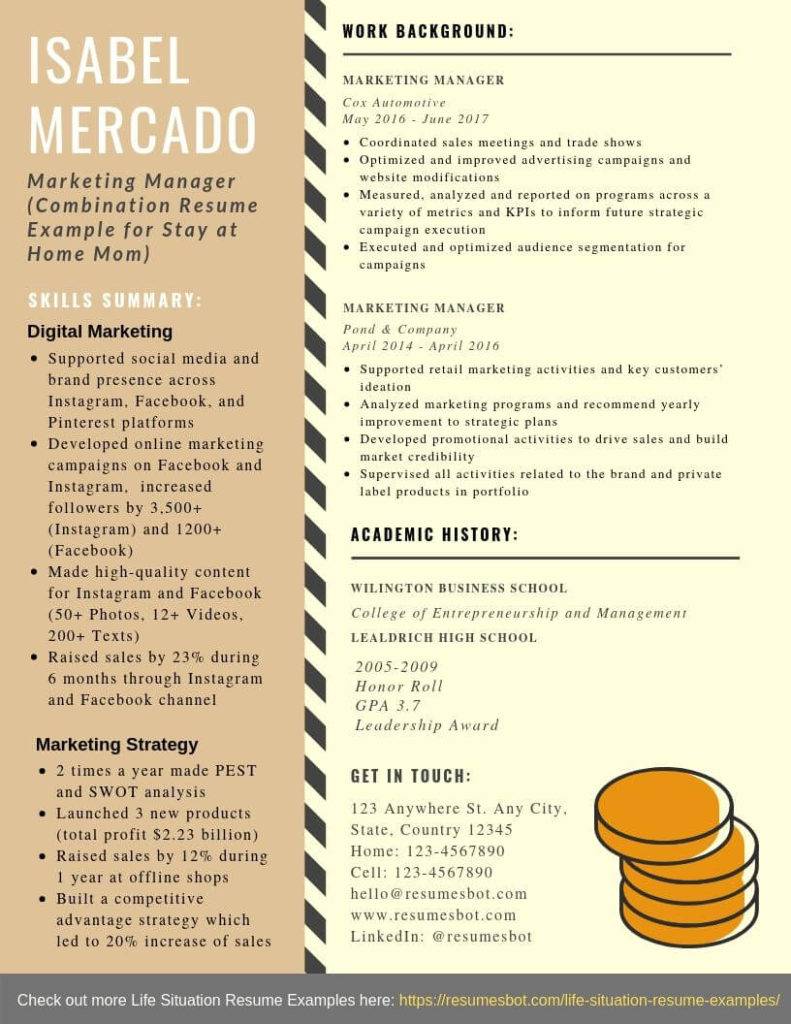Table of Contents
Two of the three most popular resume formats – chronological and functional – have their pros and cons, but when you cannot decide on a clear winner, chances are good that the third most popular choice, combination resumes, are an effective compromise for you. This format balances the best features of the other two by giving equivalent space to both your career skills and your work history.
What Is the Best Definition of a Combination Resume?
A combination resume definition explains how this format brings function and chronology together in just a page or two. It presents your unique skills, abilities and accomplishments and also summarizes your employment history in reverse-chronological order.
What is a combination resume? It is a hybrid resume format that creates a complete picture of you as a career professional. It helps hirers see that you are far more than just a space filler. It offers you the opportunity to highlight your aptitude for the job while satisfying the employers’ curiosity about where you have worked and for whom.
Of course, this method of organizing your career information also includes the basics you would find on any resume. Your contact information, a summary of your career goals, and your academic degrees/professional certifications are all important features that you need to include in the appropriate places.
Combination Resume Templates
You can easily nail the combined resume format by accessing a combination resume sample online. In general, sites that offer the combination resume template free of charge provide the same general format:
- Your contact information
- Brief summary of your career goals/skills
- Relevant skills and accomplishments
- Your experience/job history
- Your academic credentials

Template 1 
Template 2
Combination Resume Example
Combination resume formats are versatile. They allow you the flexibility to decide what information you wish to include and how to present it.
For example, in a chronological resume, one of the first sections lists every job you have held over the past decade. With your work history in the spotlight, you probably do not want to leave anything out. That would create a gap that would require an explanation during an interview.
In a combination resume, your skills and accomplishments are equally important as your job history, so you can highlight only those jobs that relate to those skills, accomplishments and relevant experiences.
RELATED:
How to List Publications on CV
Jobs that Don’t Involve Customer Service
How to Write a Combination Resume
Even while following the template point for point, you can still make your combination resume unique with a few smart additions. If you want to get an edge on other applicants:
- Use keywords from the job description in your resume.
- Double-check your spelling and grammar.
- Get rid of non-relevant information, such as your marital status or your favorite books.
- Use action verbs whenever possible.
- Add lines between sections to make it easier for employers to skim.
Also, confirm all of the information on your resume is accurate and up-to-date. Make sure to add any recent skills and experience, and eliminate outdated information.
Rework your data to apply directly to the job you are seeking. For example, if the job description calls for knowledge of specific software, highlight your corresponding knowledge, if you have it.
Contact Information
This information should appear in the header of your resume. It should include your name, address, phone number, email and the URLs of your professional networks and portfolio, if any.
Skills Summary
Make sure that the skills listed in this section relate directly to the job at hand. If the position is managerial, for example, include those skills that relate to management, coaching, mentoring and supervising others.
Additional Skills
Under this heading, you can add career skills that are related but not necessarily specific to the job opening. For example, you could mention that you have mentored young people through the Big Brothers/Big Sisters program.
Professional Experience
This is the spot where you summarize your job history. It is perfectly fine to omit jobs unrelated to your career field and the job opening itself. Remember, however, to list your most recent position first and then the others in reverse chronological order. List only relevant positions you have held in the past 10 or so years.
Education
Organize your college/trade school history in reverse chronological order. Include the name of the institution, the city and state where it is located, and the degree or certification you earned. If you have been out of college for more than a few years, consider omitting dates from this section.
Conclusion
Merging chronological and functional resume formats into a combination format is a highly effective way to tout your skills and achievements as a career professional. It also highlights your most relevant work experience. As one of the three most commonly used resume types, the combination format is designed for clarity as well as impact. It may just be the right choice for your next job application.


